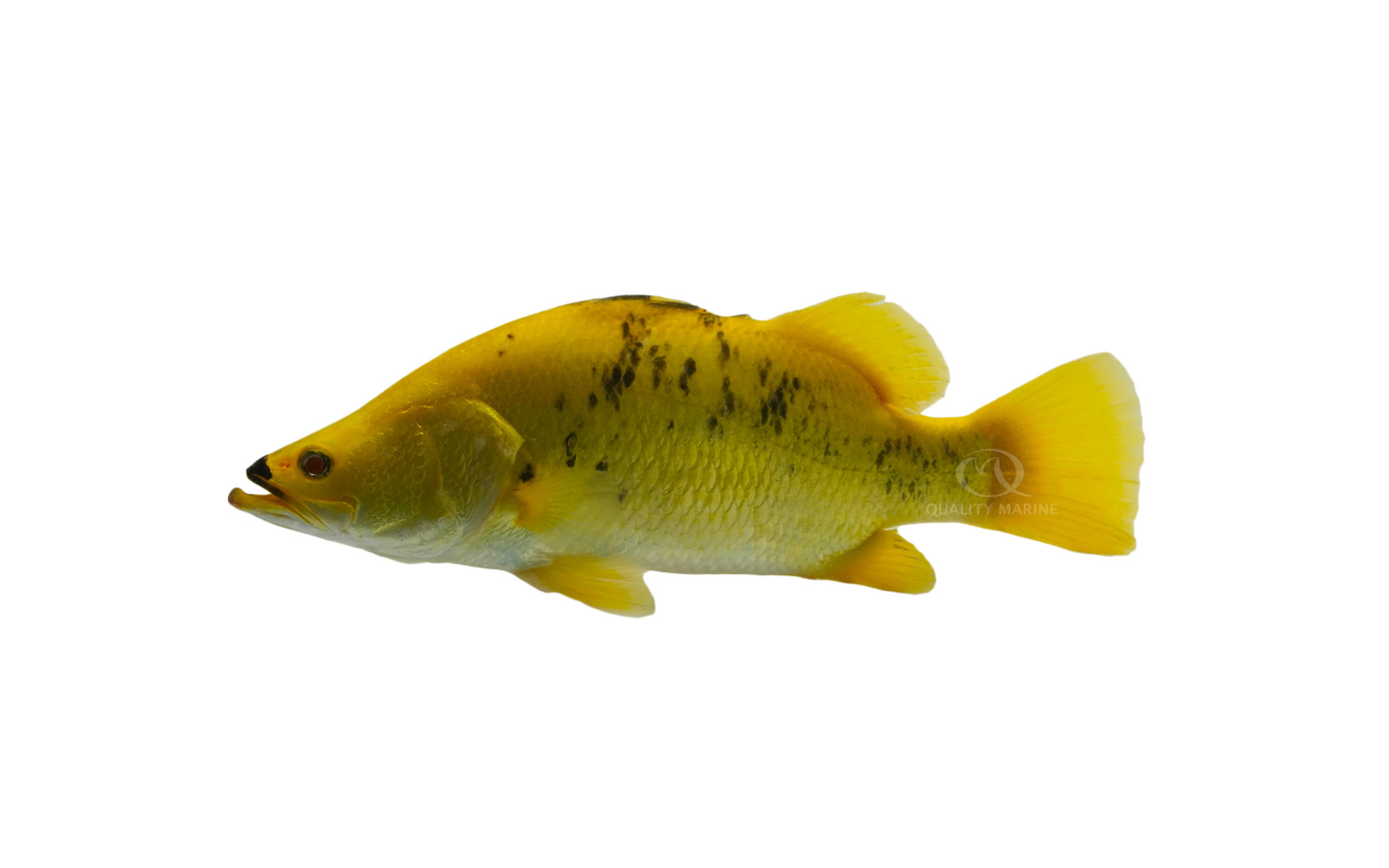Beautiful, Big Barramundi

Lates calcarifer is the scientific name for the fish most of us know as Barramundi, which is a word borrowed from Australian Aboriginal language. They are also known as “Giant Sea Perch” and “Asian / Australian Sea Bass.” Barramundi are native to coastal regions of the tropical Indopacific, from Australia in the south, to India and Southeast Asia in the north. Long thought to be purely catadromous (meaning a fish that lives most of its life in freshwater, then migrating to saltwater to spawn), they have more recently been found to live long term in marine, fresh and brackish environments. Wild Barramundi prefer water that is over 12 feet deep, but less than 50 feet or so.
For many years, Barramundi has been a popular food fish throughout Asia and Australia, where it is frequently served fried and is delicious. It's firm white flaky texture and mild flavor are the hallmarks of a good fried Barramundi and chips. It's very sustainably raised and high in Omega 3 fatty acids. The secret of how good Barramundi is has only recently started to catch on in the Western Hemisphere. It is this popularity that has driven amazing advancements in Barramundi aquaculture. These same advancements have resulted in stable production of some amazing color variants that are now available to the aquarium trade. We're proud to announce that we have a stunning selection specimens, including some very rare Golden, Panda, Sunshine, and Tiger variants in stock. These fish are all around 12” long at this time. All our aquacultured Barramundi have been reared in marine environments, and are currently being held in the same. Like their wild counterparts, they can easily be acclimated to both brackish and freshwater environments as long as this process is done with care.
Barramundi are very easy fish to keep. They are a naturally adaptable animal, found in a huge range of temperatures and the full range of salinities. The fish available now to our partner stores have been cultured for many generations and as such are completely used to commercial foods; they have been fed a high quality pellet since they were able to take one. They school well and are very accustomed to humans as a source of food, making them very engaged at meal times. Many generations of aquaculture has also yielded fish that were chosen for disease resistance (and also flavor, color, filet thickness and growth rate – more on this later). This is a peaceful fish in that it will not harass other fish. It will however, eat just about anything it can fit in its mouth. As the Barramundi grow, smaller fish and invertebrates will not be safe around them. The biggest challenges facing Barramundi keepers are familiar to anyone who has kept large fish before: getting them enough food, having strong enough filtration to handle the waste, and having a big enough display to keep them.
The Barramundi will get big quickly, which makes them uniquely suited for aquaculture as a food fish. While Lates calcarifer won't reach sexual maturity for 3 years or so, it could easily be two feet long (or more) by then. Adults are commonly three to four feet long, though the record fish is over six feet long and 120+ pounds. While this has made them a very popular sport fish, it does mean that long term keeping of Barramundi will take a small pool or pond. This is an ultimate Monster Fish Keepers dream fish. As previously mentioned, if well fed, and kept in clean water, adult Barramundi are an excellent table fish (though some fish keepers will balk at eating them after hand feeding them for years, we get it). L. calcarifer is generally commercially grown at somewhere close to 84 or 85 degrees Fahrenheit, though they can live in water much cooler than that. For fish keepers trying to keep their Barramundi aquarium sized for longer, temperatures in the low 70s (or even cooler) will slow their growth rate exponentially, resulting a fish that can be kept for much longer in large, but more common aquarium environments. It is for this reason that most of the commercial aquaculture facilities worldwide are in very warm environments.
If you've ever wanted a Barramundi, now's the time. These aren't available every day, especially in these color forms. Perhaps you have a huge display, or you want the coolest pond fish ever. Whatever the reason, Barramundi are amazing. If you're up to the challenge, have your LFS call Quality Marine today!
Source:
https://www.mainstreamaquaculture.com/golden-barramundi/
http://www.fao.org/fishery/species/3068
https://www.thebetterfish.com/impact/fish-can-finally-farm-without-guilt-atlantic/